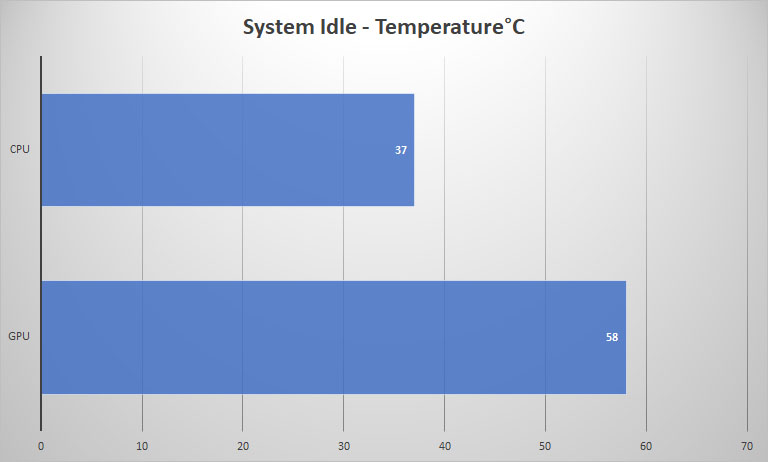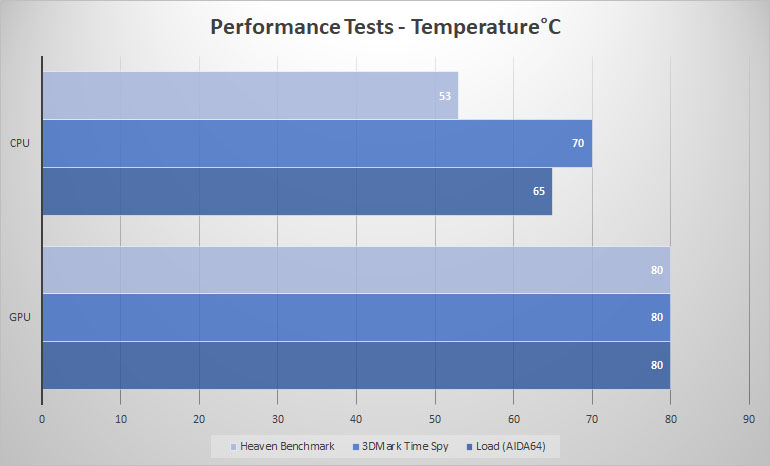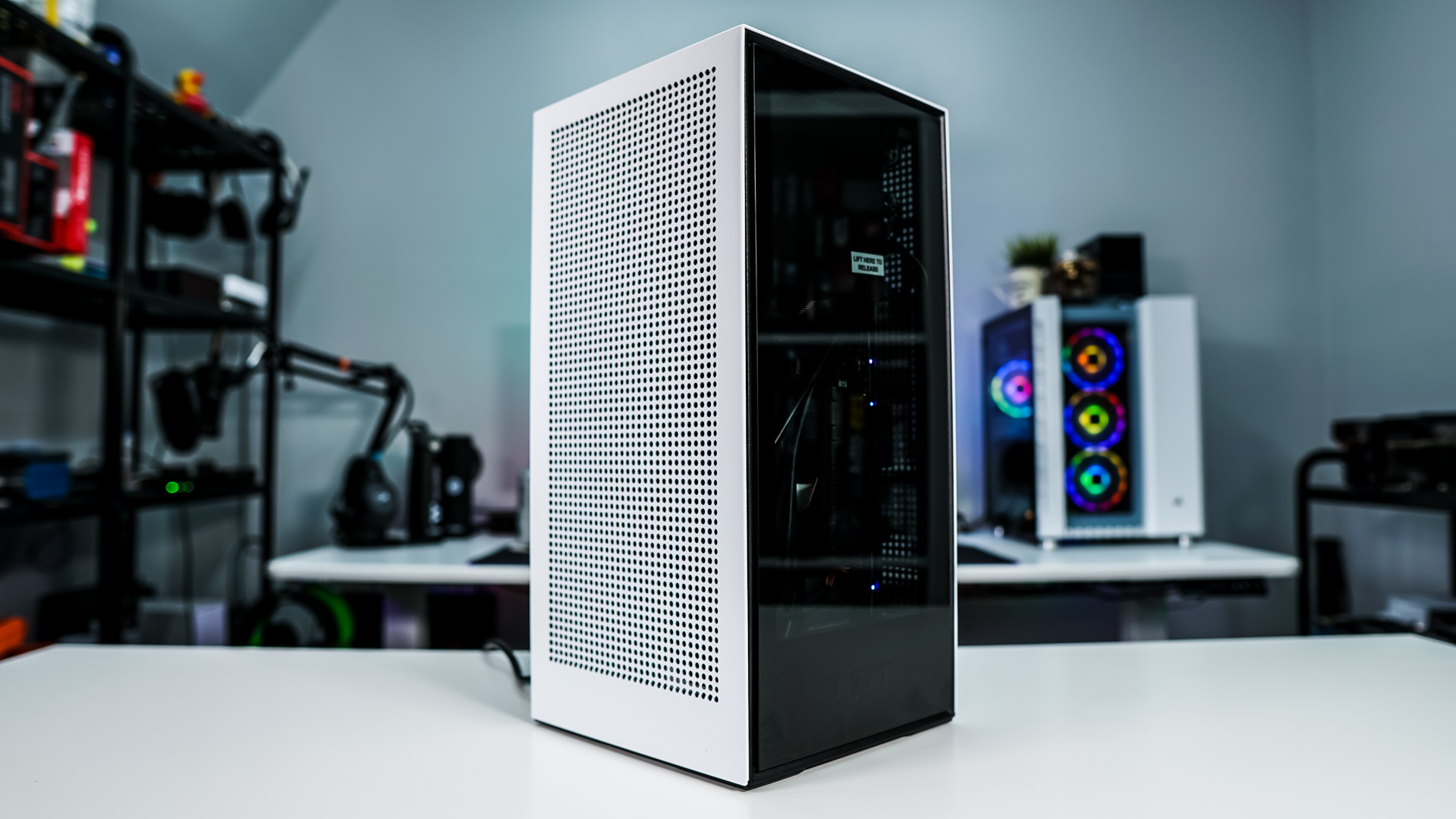Testing
Obviously when you are building a system in such a small space temperature is going to come into play. One thing that was very interesting about the NZXT H1 is that you cannot add any fans to it. So you basically rely on the AiO, fan on the PSU and your graphics card’s cooling to get the job done. Here are the specifications of the system that we installed in the H1.
– ASRock X570 Phantom Gaming-ITX/TB3
– AMD Ryzen 7 3700X
– Gigabyte GeForce RTX 2060 Super Gaming OC 8G
– HyperX Fury RGB DDR4-3200 16GB
– ADATA SU750 1TB
First up we have our idle test which is taken on the Windows 10 desktop after 1 hour.

As you can see the results are pretty good. Moving on to load and performance tests we ran 3 actually. First we put full load on our CPU and GPU using AIDA64’s system stability test. Then we run the 3DMark Time Spy benchmark, which would mimic a pretty heavy AAA title. Finally we run the Heaven benchmark, which would mimic a less CPU intensive game. We record the highest temperature we reach during each test.

Here we can see the the 140 mm AiO does a great job cooling the CPU. The GPU on the other hand does get pretty warm and that really is expected. Now if you manually set your GPU fan speed or set a more aggressive fan curve you can definitely get better results. Obviously in such a tight space with no other fans your GPU is going to get a bit warm.


